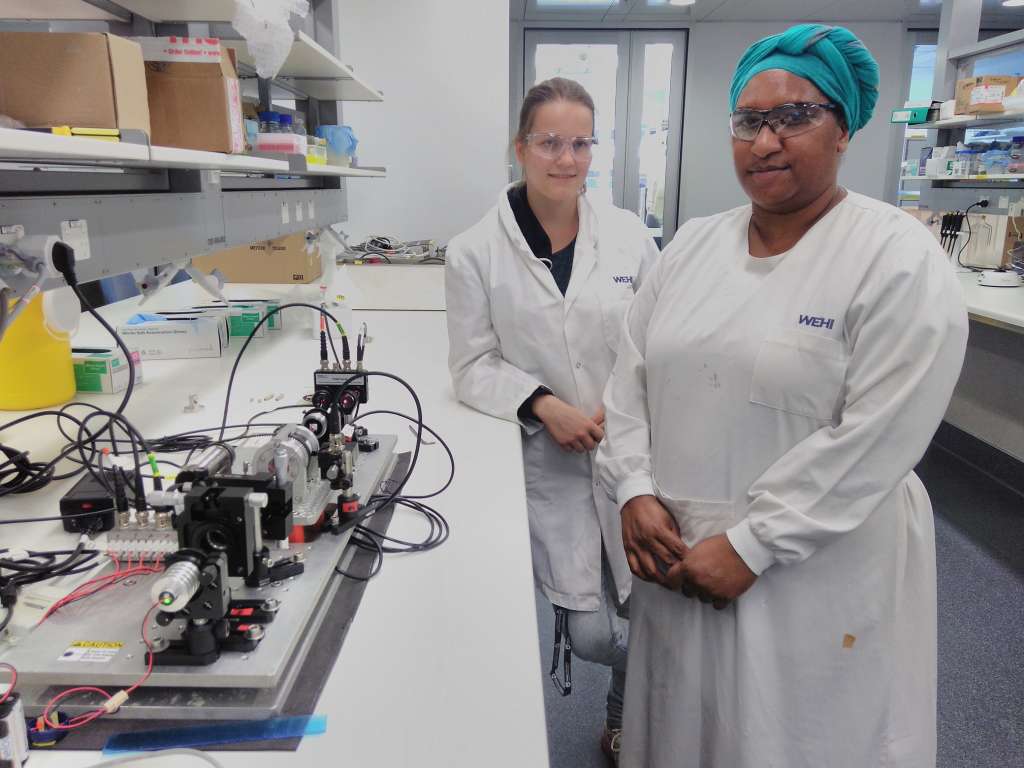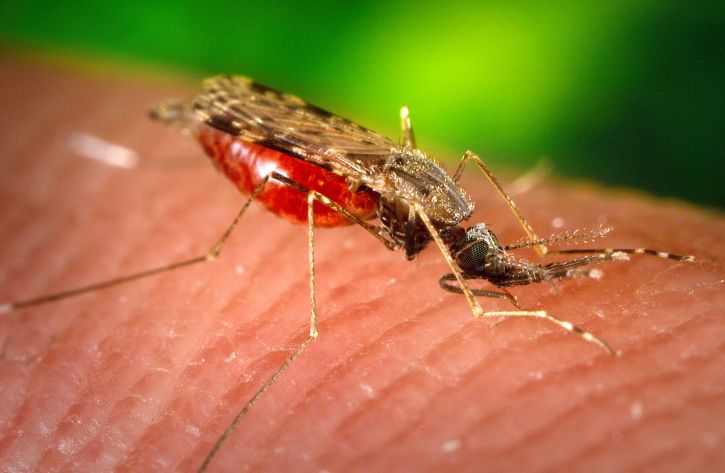A new field test tool developed by an international team of scientists may lead to improved malaria diagnosis in remote communities by using a novel technique, detecting magnetic properties of blood infected with this deadly, global disease.
The research, led by scientists at James Cook University, examined around 1,000 suspected malaria patients in a high risk area of Papua New Guinea to test the new tool in the hope it will help eliminate the mosquito-borne disease in resource limited areas.
Malaria is caused by Plasmodium parasites and is spread by the bite of an infected female Anopheles mosquito. The disease is estimated to have caused around 229 million cases globally in 2019, with an estimated 409,000 deaths1.
Quick, cheap, and very promising
The research2, which was published in Nature Communications earlier this month, describes an approach called rotating-crystal magneto-optical detection (RMOD) which was developed after years of in-lab optimisation and could be used to detect malaria-infected blood in the field in remote PNG communities.
RMOD performs well when compared to the most reliable malaria diagnosis methods, said lead author Dr Stephan Karl, a Senior Research Fellow in Malaria and Vector Biology at JCU.
“It’s very promising, as RMOD testing can be conducted after a short training session and provides test results within 10 minutes. From a funding perspective the cost is very low since no expensive reagents are used.”
Two key concepts examined in the development of RMOD were sensitivity (the ability of a test to detect true positive samples compared to a reference method) and specificity (the ability for the test to detect true negatives, i.e. where the disease is not present).
“In our study we used WHO-accredited standard light microscopy
as the reference method. Overall RMOD detected 84 per cent of infections that were also detected by light microscopy and 88 per cent for the parasite species Plasmodium vivax,” said Dr Karl, speaking about sensitivity.
“In our study the specificity was 82 per cent overall. However, it should be noted that not all infections are detected by light microscopy and it is not a perfect reference standard (there is no perfect reference standard as all methods are subject to limitations).”

Image: Study authors Tamarah Koleala (foreground) and Leandra Arndt with the RMOD prototype machine. Used with permission.
Parasites boost blood magnetism
RMOD works because malaria-infected blood has magnetic properties caused by malaria parasites infecting red blood cells and creating a build up of an iron-rich, magnetic substance called hemozoin.
Red blood cells contain an oxygen-transporting protein called hemoglobin which contains iron and is, by itself, non-magnetic. While malaria parasites feed off the globin or protein part of the molecule, the free heme accumulates in the blood, Dr Karl said.
“Free heme is highly toxic to the parasite and thus the parasite has evolved a pathway to detoxify the heme by assembling it into a new, crystalline structure called hemozoin. Hemozoin is basically a heme polymer in which the iron is now much more concentrated (about 10 per cent of the mass of hemozoin is iron) and also oxidised to a ‘magnetic state’ of iron.”
As the parasites mature in the red blood cell, the hemezoin accumulates. This can be detected by methods such as ROMD which use magnetic fields applied to the infected blood and which affect the alignment of the hemezoin crystals, Dr Karl said.
“When the magnetic field is rotated around the sample, the hemozoin crystals also start rotating. When a laser beam is used to penetrate the sample, the rotation of the hemozoin crystals alters the polarisation of the beam emerging on the other side of the sample. We can measure this change in polarisation very sensitively and this is the basic principle underlying the method.”
Alternative method can be scaled up
While the magnetic properties of hemezoin have been known about since the 1980’s, RMOD took so long to discover because other, more traditional methods of malaria diagnosis were more commonly used.
“It is clearly not a mainstream approach so one of the major difficulties was to bring together physicists and biologists to seriously work on this together,” Dr Karl said.
“Physicists often don’t have easy access to biological samples or field sites and years may pass between establishing a collaboration, proving the principle, optimisation, convincing funders to be able to eventually show that something really works under real-world conditions.”
Thanks to this research however, the RMOD device has been shown to be effective and could be easily scaled up for use in remote areas.
“We think that it is quite easily possible to miniaturise the apparatus and make usage very simple. We are currently also working on increasing the throughput. We are in the process of approaching industry partners to enable these further developments,” Dr Karl said.
The hope is that the RMOD device would be used for malaria detection with the push of a button, Dr Karl said.
Previous infections create challenges for RMOD
However Dr Karl noted that there were some challenges in the further development of the RMOD test. For instance, RMOD had difficulty distinguishing between actual malaria-infected blood and blood from individuals with prior infections due to a “background” hemezoin level found in populations within high transmission areas such as PNG.
“This is in a way similar to antibodies which are the basis of many diagnostic tests. Similar to the antibodies, the hemozoin persists in the blood for a while after the actual infection is cleared. For us, this means that in these high transmission settings the specificity to detect acute clinical infections is decreased. This is why in our study specificity was ‘only’ 82 per cent,” Dr Karl said.
There was “strong evidence” RMOD performed better in low transmission settings with a small study in Thailand finding that sensitivity and specificity were greater than 95 per cent there, Dr Karl told Lab Down Under.
“Thus, our novel method may be a valuable tool in settings that are working towards malaria elimination (which hopefully will be all areas in the world),” he said.
Another possibility was that the persistence of hemezoin in individuals could enable some sort of ‘magneto-optical serology’ approaches to conduct mass screening in malaria hotspots and transmission epicentres.
“Nowadays this is done using serological tests looking for antibodies but our method has the potential to be much faster and cheaper. We are working on further studies to prove that concept,” Dr Karl said.
The international team included scientists from Curtin University, the University of Augsburg, the PNG Institute of Medical Research, the Burnet Institute, Budapest University of Technology and Economics, Hungary’s National Public Health Centre, and the University of Technology in Dresden.
Author’s note: If you enjoyed this article, you can follow Lab Down Under on Facebook, LinkedIn, YouTube, Reddit and Twitter or support me on Patreon. Finally, you can subscribe here to get my blogs in your inbox.
1 Malaria Fact Sheet, World Health Organization, November 2020
2 Arndt L, Koleala T, Orbán Á, Ibam C, Lufele E, Timinao L, Lorry L, Butykai Á, Kaman P, Molnár AP, Krohns S, Nate E, Kucsera I, Orosz E, Moore B, Robinson LJ, Laman M, Kézsmárki I, Karl S. Magneto-optical diagnosis of symptomatic malaria in Papua New Guinea. Nature Communications volume 12, Article number 969 (2021)
Featured image: Image of mosquito. Picture by James Gathany, USCDCP. Used under the CC0 1.0 Universal (CC0 1.0) Public Domain Dedication licence.
